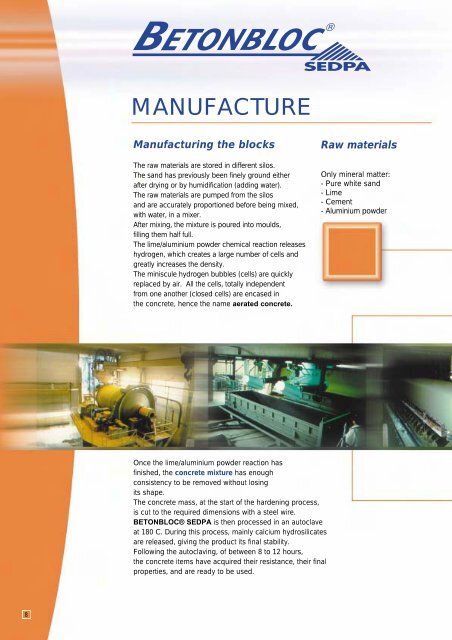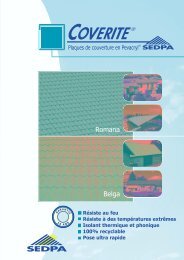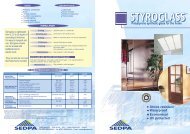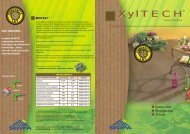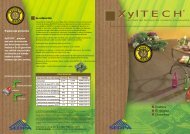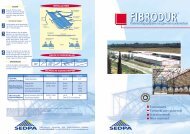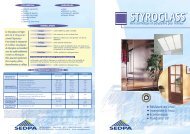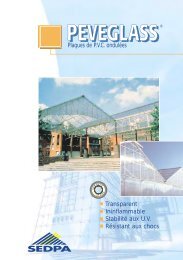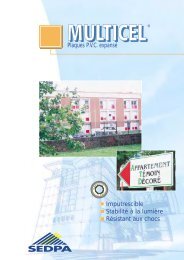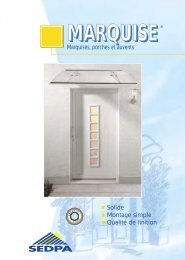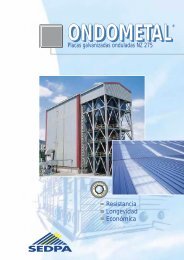Betonbloc - Sedpa
Betonbloc - Sedpa
Betonbloc - Sedpa
You also want an ePaper? Increase the reach of your titles
YUMPU automatically turns print PDFs into web optimized ePapers that Google loves.
MANUFACTURE<br />
Manufacturing the blocks<br />
The raw materials are stored in different silos.<br />
The sand has previously been finely ground either<br />
after drying or by humidification (adding water).<br />
The raw materials are pumped from the silos<br />
and are accurately proportioned before being mixed,<br />
with water, in a mixer.<br />
After mixing, the mixture is poured into moulds,<br />
filling them half full.<br />
The lime/aluminium powder chemical reaction releases<br />
hydrogen, which creates a large number of cells and<br />
greatly increases the density.<br />
The miniscule hydrogen bubbles (cells) are quickly<br />
replaced by air. All the cells, totally independent<br />
from one another (closed cells) are encased in<br />
the concrete, hence the name aerated concrete.<br />
Raw materials<br />
Only mineral matter:<br />
- Pure white sand<br />
- Lime<br />
- Cement<br />
- Aluminium powder<br />
Once the lime/aluminium powder reaction has<br />
finished, the concrete mixture has enough<br />
consistency to be removed without losing<br />
its shape.<br />
The concrete mass, at the start of the hardening process,<br />
is cut to the required dimensions with a steel wire.<br />
BETONBLOC® SEDPA is then processed in an autoclave<br />
at 180 C. During this process, mainly calcium hydrosilicates<br />
are released, giving the product its final stability.<br />
Following the autoclaving, of between 8 to 12 hours,<br />
the concrete items have acquired their resistance, their final<br />
properties, and are ready to be used.<br />
8


